Names link to more information on identification and management.
Click on photos to enlarge
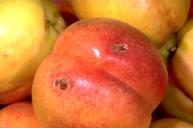
Peach twig borer
Identification tip: The peach twig borer larva generally
enters fruit and feeds just under the skin. |
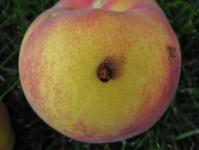
Oriental fruit moth
Identification tip: Small larvae of oriental fruit
moth bore into the fruit, often at the stem end or where
two fruit are touching, and feed in the pit area. |
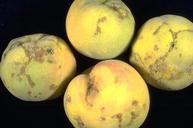
Obliquebanded leafroller and omnivorous
leafroller
Identification tip: Obliquebanded leafroller and omnivorous
leafroller cause similar damage by chewing shallow channels
in the fruit surface, resulting in small surface scars. Leaves
may be webbed to fruit. |
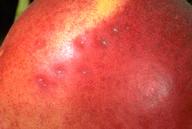
San Jose scale
Identification tip: San Jose scale on fruit can cause fruit spotting. |
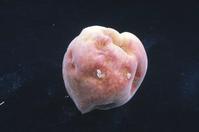
Stink bugs
Identification tip: Stink bug feeding distorts fruit
shape. |
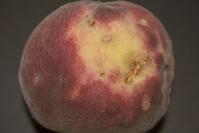
Plant bugs (Calocoris)
Identification tip: Plant bug feeding causes distortions
in shape and small slits on the fruit surface. |
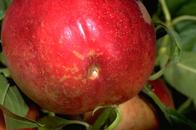
Katydids
Identification tip: The corky patch on this fruit
is typical of katydid damage. |
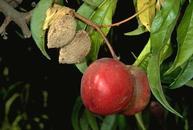
Fruit rot
Identification tip: Ripe fruit rot first appears as
grayish tufts of spores on the fruit surface. |
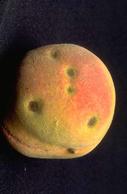
Rust
Identification tip: Small, sunken spots caused by
rust may be confused with stink bug damage, but the presence
of rust spots on foliage helps identify the disease. |
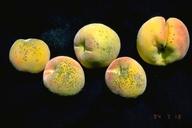
Scab
Identification tip: Scab lesions on mature
fruit may have green or yellow halos and tend to be concentrated
on the portion of the fruit that faced upward on the tree. |
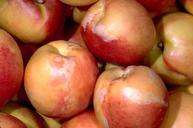
Western flower thrips
Identification tip: Thrips feeding scars the surface
of fruit and gives it a silvered or mottled appearance. |


